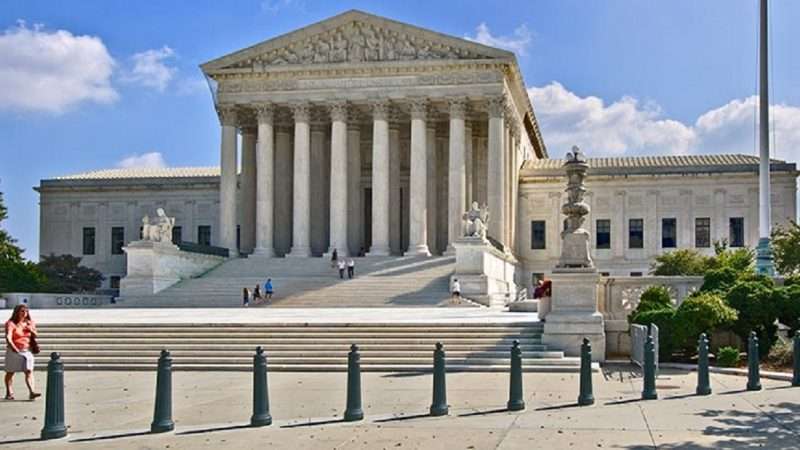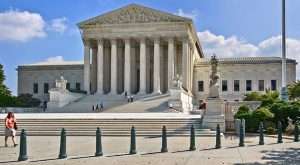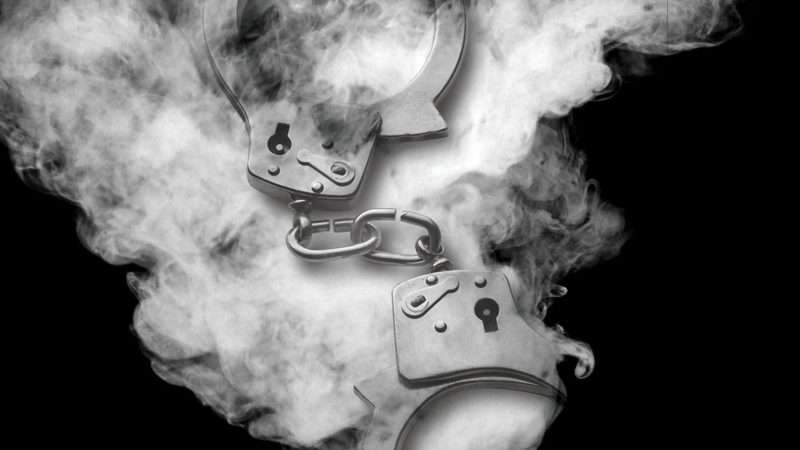In this month’s issue, we draw on decades of Reason journalism about policing and criminal justice to make practical suggestions about how to use the momentum of this summer’s tumultuous protests productively. Check out Damon Root on abolishing qualified immunity, Peter Suderman on busting the police unions, Sally Satel on rethinking crisis response, Zuri Davis on restricting asset forfeiture, C.J. Ciaramella on regulating use of force, Alec Ward on releasing body cam footage, Jonathan Blanks on stopping overpolicing, Stephen Davies on defunding the police, and Nick Gillespie interviewing former Reasoner Radley Balko on police militarization.
“Critics of prohibition need to guard against the temptation to merely tinker with the drug laws.”
Jacob Sullum
“The Fixers”
December 1991
Louisville, Kentucky, police officers did a lot of things wrong when they killed Breonna Taylor, an unarmed 26-year-old EMT and aspiring nurse, during a fruitless no-knock drug raid last spring. But the litany of errors that led to Taylor’s death would be incomplete if it did not include the biggest mistake of all: the belief that violence is an appropriate response to peaceful conduct that violates no one’s rights. If politicians did not uncritically accept that premise, which underlies a war on drugs that the government has been waging for more than a century, Taylor would still be alive.
The March 13 raid followed a sadly familiar pattern. Plainclothes police officers break into someone’s home in the middle of the night and respond with reckless, overwhelming force when the residents have the temerity to defend themselves. After such incidents, we usually say that confused, bleary-eyed people—in this case, Taylor’s boyfriend, Kenneth Walker—mistook the cops for criminals. But the reality is that the cops in situations like this are criminals, or would be but for the war on drugs.
Drug prohibition legalizes conduct that otherwise would be instantly recognized as felonious, including assault, theft, trespassing, burglary, kidnapping, and murder. It makes police officers enemies to be feared rather than allies to be welcomed.
The Louisville City Council responded to Taylor’s death by banning no-knock raids—a welcome step of questionable relevance, since the cops who raided her apartment, notwithstanding their no-knock warrant, banged on the door before breaking it in and claim they identified themselves (a point disputed by Walker and by Taylor’s neighbors). The police chief responded by initiating the termination of the officer who “displayed an extreme indifference to the value of human life” when he “wantonly and blindly fired 10 rounds” into Taylor’s apartment.
If judges did not routinely rubber-stamp search warrants, police investigating drug dealing might be less likely to invade the homes of people who are not actually drug dealers. And if cops were better trained in the appropriate use of deadly force, they might not fire wildly into an apartment building when the victims of such home invasions exercise their Second Amendment rights.
But reforms like these do not address the fundamental problem. When politicians insist on using force to prevent consumption of drugs they don’t like, bad things happen, starting with the violence that is required to enforce their pharmacological prejudices.
That problem goes far beyond the cases, such as Taylor’s, that are highlighted by Black Lives Matter. When a middle-aged white couple is killed in a drug raid instigated by a black narcotics officer who lied to obtain the search warrant (as happened in Houston last year) or a white 19-year-old is fatally shot by a white police officer during a marijuana sting (as happened in South Carolina several years ago), those outcomes are just as senseless and heartbreaking as the death of a young black woman gunned down by white drug warriors.
Drug prohibition also fosters violence by creating a black market in which there are no legal, peaceful ways to resolve disputes. A 1989 analysis of New York City murder cases, for example, found that, contrary to the impression left by politicians and journalists at the time, “crack-related” homicides were not committed by people under the influence of crack. The vast majority grew out of black-market conflict.
The black market that generates violence also generates artificially high profits, since traffickers can earn a risk premium by supplying contraband. According to a RAND Corp. estimate, Americans alone spend about $150 billion a year on marijuana, heroin, cocaine, and methamphetamine. The worldwide value of illegal drugs may be three or four times as high.
Profits from that business strengthen murderous criminal organizations and foster corruption throughout the law enforcement system. In one recent case, a Drug Enforcement Administration agent had a drug trafficker buy a $43,000 truck so he could seize it for his own use. In another case, a Customs and Border Protection agent was paid by drug traffickers for 10 years to facilitate smuggling. In yet another case, police officers in Philadelphia and Baltimore had a sideline in selling the drugs they seized. And then there’s the perennial problem of correctional officers who smuggle drugs into prisons.
As it did during national alcohol prohibition, that sort of corruption tends to undermine respect for the law. So does the sense that police are arbitrarily targeting a small percentage of lawbreakers for arrest and punishment, especially when enforcement has a racially disproportionate impact.
In New York City during the Giuliani and Bloomberg administrations, annual arrests for the lowest-level marijuana possession offense, which had averaged fewer than 2,500 under the two mayors who preceded Giuliani, skyrocketed after 1996, peaking at more than 50,000 in 2011. Blacks and Latinos, who together represented about half of the city’s population, accounted for 84 percent of the possession arrests that year.
On its face, the surge in pot busts was puzzling in light of the fact that New York legislators supposedly decriminalized marijuana possession back in 1977. But possessing marijuana that is “burning or open to public view” remained a misdemeanor. Defense attorneys frequently complained that cops were manufacturing misdemeanors by patting down young men, ostensibly for weapons, and pulling out joints or bags of weed, which were then exposed to “public view.” Another technique was asking people to hand over whatever contraband they were holding, at which point they could be charged with a crime.
When you combine such trickery with the routine hassling of young black and Latino men that prevailed under the “stop, question, and frisk” program, it’s not surprising that police are widely viewed as the enemy in many neighborhoods they’re supposed to be protecting. And the disparities seen in New York are seen throughout the country: Nationwide, black people are nearly four times as likely to be arrested for marijuana possession as white people, even though they are only slightly more likely to be cannabis consumers.
The FBI recorded more than 660,000 marijuana arrests in 2018, more than nine out of 10 for simple possession. While people arrested for possessing small amounts of marijuana usually do not spend much time behind bars, they suffer long-lasting ancillary penalties that make it harder to obtain an education, earn a livelihood, and find housing.
Police in the United States reported a total of 1.7 million drug arrests in 2018. At any given time, nearly half a million people are incarcerated in U.S. jails or prisons for drug offenses. Drug offenders account for almost half of federal prisoners and 15 percent of state prisoners.
Arresting all of those people for actions that violated no one’s rights unjustly deprives them of their liberty and impairs their life prospects. It also hurts their families and communities. And it frequently entails draconian penalties, including sentences of years, decades, and even life, for nonviolent offenses. A man named Andy Cox, for instance, is serving a life sentence in federal prison for growing marijuana for recreational consumers, which is now a legal business in nine states.
Prohibition obviously makes drug use more dangerous by exposing people who violate it to the risk of violence and arrest. It also makes drug use more dangerous by creating a black market where quality and purity are unpredictable, which is not typically a problem with legal drugs.
As the government succeeded in driving down opioid prescriptions as part of the recent crackdown on pain pills, for example, the upward trend in opioid-related deaths not only continued but accelerated. That was not a coincidence, since the crackdown drove nonmedical users from legally produced, reliably dosed pharmaceuticals toward highly variable black-market substitutes.
The emergence of fentanyl as a heroin booster and substitute has magnified the risks faced by illegal drug users. That phenomenon is also driven by prohibition, which pushes traffickers toward more-potent drugs because they are easier to smuggle. Just as alcohol prohibition drove a shift from beer and wine to distilled spirits, drug prohibition has driven a shift from opium to heroin, and now from heroin to fentanyl and fentanyl analogs, which are even more potent.
By raising drug prices, prohibition encourages injection, the most efficient route of administration. And by obstructing access to sanitary injection equipment, prohibition fosters soft-tissue infections and the spread of blood-borne diseases such as AIDS and hepatitis.
One thing that’s especially notable about these burdens is that the people who bear them are not, by and large, the people who benefit from them. Prohibition makes life worse—in many cases, a lot worse—for people who defy it. Those harms supposedly are justified by the goal of protecting people who are deterred by prohibition from bad choices they might otherwise make, a tradeoff that is morally dubious even if you accept paternalism as a legitimate rationale for government intervention.
Which is not to say that the burdens of prohibition fall exclusively on people who like illegal drugs. Everyone else pays too, in the form of squandered taxpayer money, diverted law enforcement resources, theft driven by artificially high drug prices, and eroded civil liberties.
For decades the war on drugs has been the most important factor encouraging the Supreme Court to whittle away at the Fourth Amendment’s ban on unreasonable searches and seizures. Among other things, the Court has blessed pretextual traffic stops, warrantless rummaging through our trash, warrantless surveillance of private property by low-flying aircraft, mandatory drug testing of public school students, search warrants based on anonymous informants who may or may not exist, and searches triggered by a police dog’s alleged “signal.”
The war on drugs is also the main excuse for the system of legalized theft known as civil asset forfeiture, which allows police to take cash and other property they claim is connected to drug offenses.
We could avoid these disastrous consequences if the government respected the individual’s right to control his own body, including the substances that enter it. The government would still have a role, as it does with alcohol, in enforcing laws against fraud, protecting the public from reckless behavior such as impaired driving, and defending parents’ authority by imposing age restrictions on drug sales. But it would otherwise leave adults free to make their own choices.

from Latest – Reason.com https://ift.tt/2FC3DLA
via IFTTT



